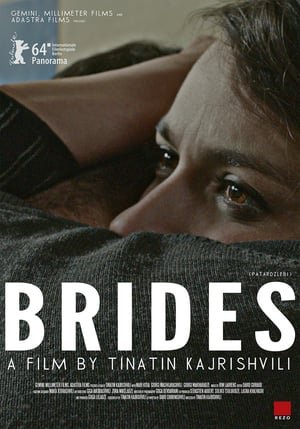Since the restoration of independence, films with various topics have been outlined in Georgian cinema. Most frequently, they deal with social issues, those that are more familiar and customary to the masses. For example, the consequences of the Abkhazian war on society, the street, drugs, poverty, etc. Among them are prisons or people rehabilitated from prison. Tinatin Kajrishvili’s film “Brides” (2014) largely deals with this issue, although this work is distinguished by the fact that it shows a familiar topic from a different perspective.
Films about prisons are generally focused on criminals, their living environment, the society of which they are a part, or their psychological state and inner adventures. As a reference point, Tinatin Kajrishvili depicted the people who stand behind the prisoners.
The main character of “Brides” Nutsa (Mari Kitia) is a mother of two young children, whose husband has been in prison for four years. She has to take responsibility for everyone and everything alone. Most importantly, she has to psychologically cope with each obstacle that she encounters at almost every step.
Imprisonment is the most unnatural state for a person. Of course, being locked up in four walls for years is difficult and uncomfortable for prisoners but their family members, friends and closest people experience no less pain and suffering. It must also be said that sometimes they have to go through a more difficult life than those in prison.
Tinatin Kajrishvili really took on a difficult task, since this situation involves creating the characters’ natural and organic psycho-types, delving deep into them and exploring them so that the characters are not superficial or stereotypical. Given the gravity and delicacy of the topic, there was a great risk that the film would be an irritating pathos. Moreover, the falsity of the characters' emotions and actions, and sometimes even situations, is often found in modern Georgian cinema, unfortunately.
Since “Brides” is an example of social cinema, the director chose to use a naturalistic style, which is most usual for such films. Naturalism is shown in various aspects and means. It is noticeable both in the artistic part and in the technical side. Firstly, in the characters because we are not watching extremely carefree people with continuous happiness and fulfilled desires or radical life severity, constantly defeated characters, but we meet people we know, who live around us, or we might compare some of them to one of us.
All the characters in the film respond to the environment. No matter how empty and drained the environment is, the characters are just as empty, which more clearly depicts their spiritual state. The similar coincidence of these two factors is one of the main characteristics of realism.
The director managed to maintain naturalism to the end, and the actors greatly contributed to this. That might be why there is no verbally conveyed pathos in the film and the main part of the drama is read in action or mimicry. The closeness that the viewer can feel towards the events and people shown in the film stems precisely from their realness. These characters are real, with real problems, feelings, passions and temptations.
The most memorable episode of the film is an issue at the same time that makes it difficult to maintain naturalism. This is a wedding in prison. Such an event is strange and non-standard, which is a certain obstacle for the realistic style, but the director found a way out here too. The question of the elderly bride - “Will the wedding be here too?” is smile-inducing and the reaction of the other brides makes this scene particularly convincing and correctly explains the wedding episode itself, since what is happening is unusual not only for the viewer but for the participants in this event as well. Therefore, the common uncertainty of these two sides naturally arouses a feeling of sympathy in the viewer.
Tinatin Kajrishvili envisaged the wedding scene in the prison as a difficult task. There is simultaneously a comic aspect in it, which could have brought this entire structure to collapse at once. However, we got a result that both makes the viewer smile and causes a feeling of embarrassment. Such an unusual synthesis only enriches the film, not to mention any flaws.
The portraits of the “brides,” their personal differences are clearly expressed in several episodes. The first meeting of these women and prisoners after a long separation is especially memorable among them. All the “brides” meet and fall in love with their “groom” differently. In their actions - in the restraint of some, in the more daring of others, in the youthful, emotional meeting of the young couple and in the quiet, devoted, courteous-like actions of the elderly - the individual portrait of each woman is clearly visible.
Although the tragedy of the “brides” is common, their reactions are different. One of the interesting elements of this film is precisely this - how different people perceive and experience a common tragedy, what manifestation the same blow can have on different personalities.
The last episode of the film and the path to it are no less important. Being together in one “cage” for 24 hours - adds a certain tension to the events and increases the feeling of empathy for the characters. Watching the film is accompanied by a doubt that does not leave the viewer, a doubt about Nutsa's loyalty. Nutsa herself hesitates and is not completely sure between her own desire and obligation, which one to choose. This doubt gnaws at her no less, although the last scene frees us from this doubt.
The farewell scene is dramatic and sensitive as well but completely devoid of uncontrolled tragedy. The open finale, Nutsa's frozen eyes, on the one hand, reflect the ominous end, on the other hand, they show the beginning of a new start. We are not able to know what this start may be. The director left us only Nutsa's frozen eyes peering through the rusty iron door.
Gvantsa Nozadze






